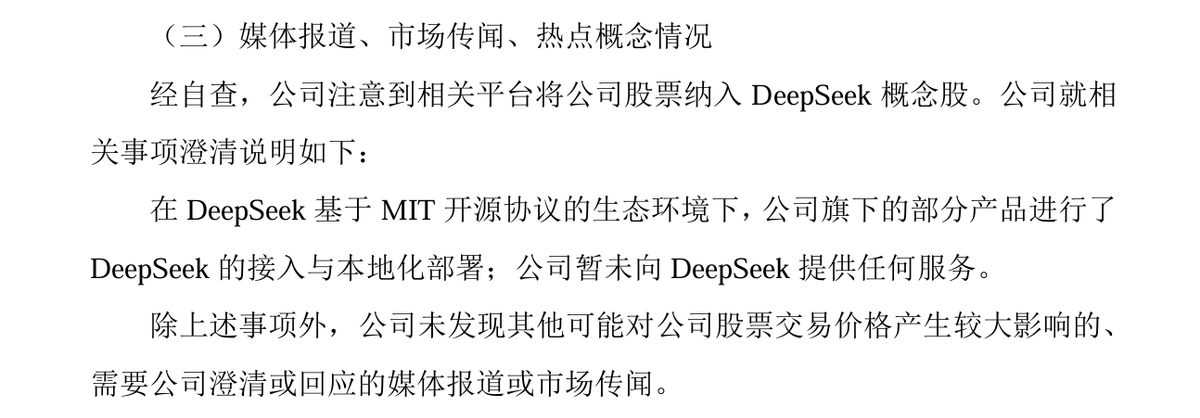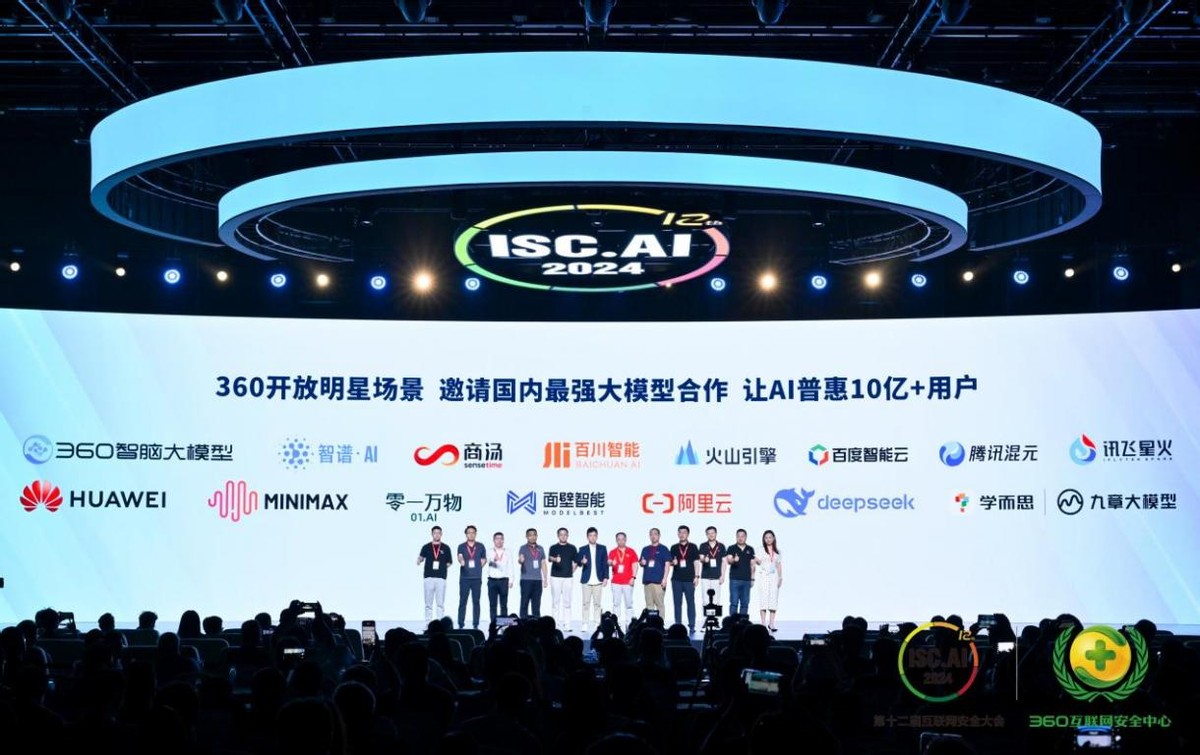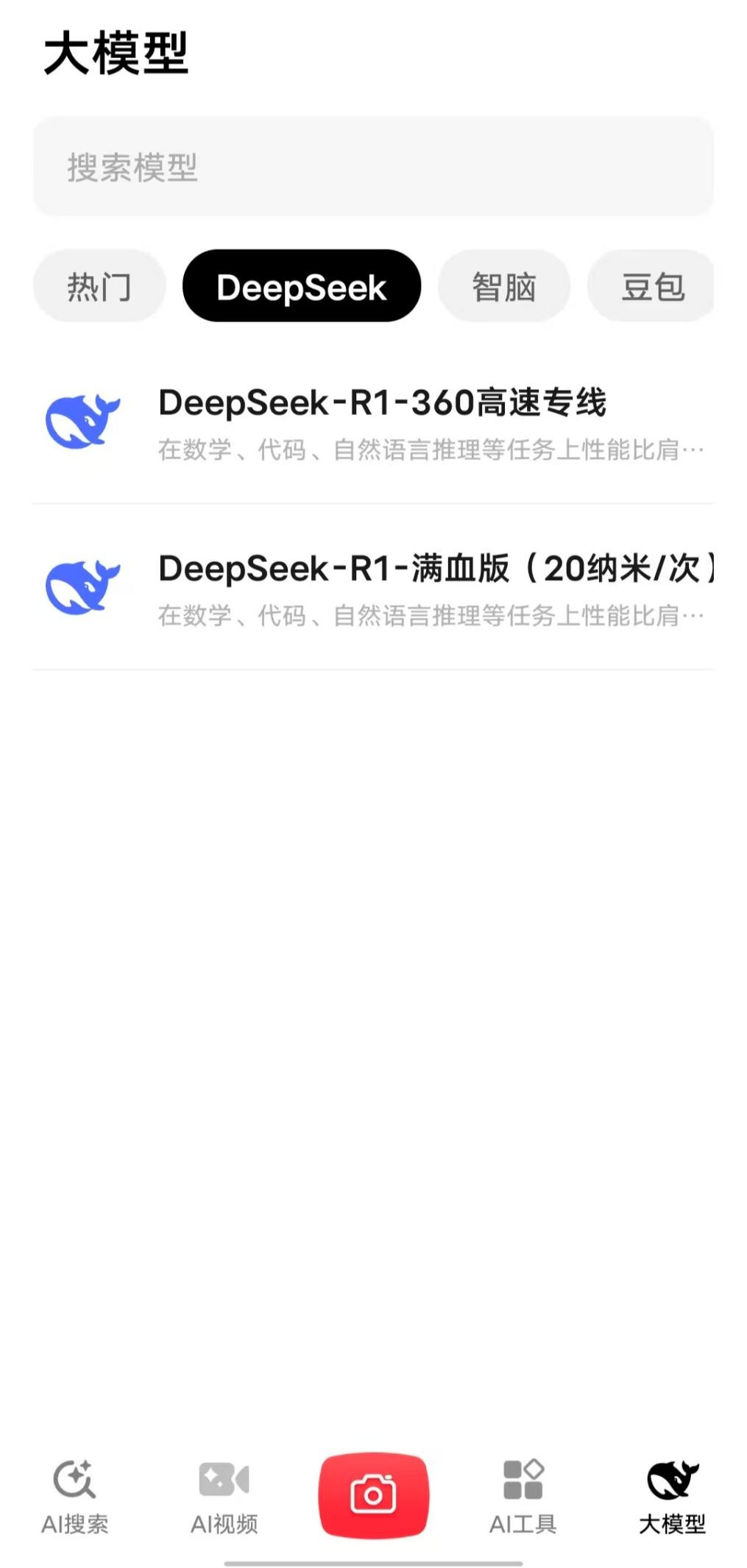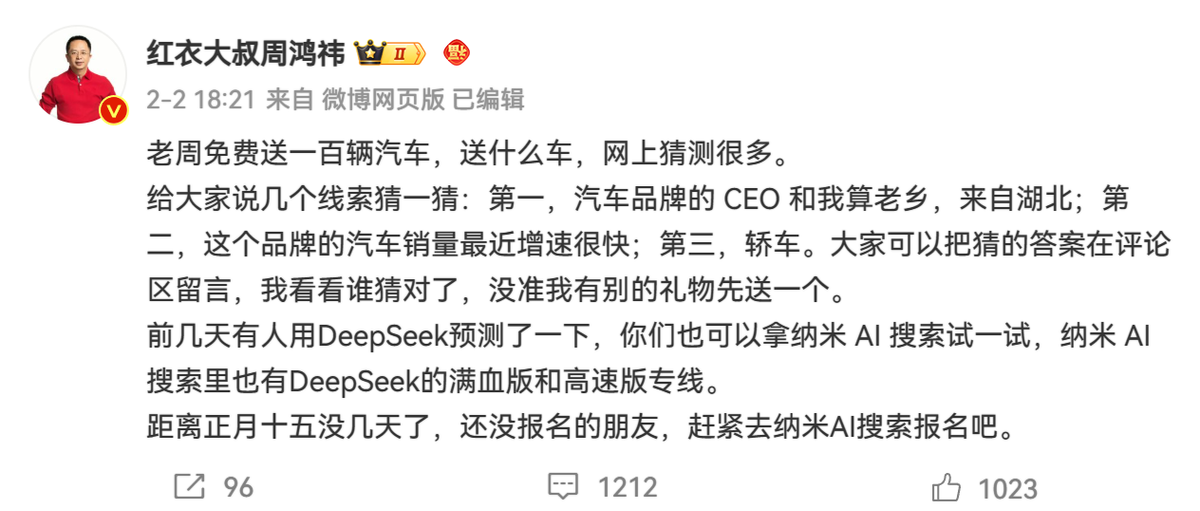Why is Zhou Hongyi Promoting DeepSeek Despite 360's Absence of Direct Services?
![]() 02/07 2025
02/07 2025
![]() 443
443
On the first trading day of 2025, February 5, 360 shares hit their daily limit. This tech giant, also known colloquially as 360, faced significant market enthusiasm the following day, prompting it to issue an announcement on February 6:
"After self-inspection, the company has noticed that relevant platforms have included our stock in the DeepSeek concept stock. The company clarifies the following regarding related matters: In the DeepSeek ecosystem based on the MIT open-source agreement, some of our products have undergone DeepSeek integration and localized deployment; however, the company has not provided any services to DeepSeek at this time."

Traditionally, investors might take such a statement as a tacit endorsement. However, 360's case is slightly different. Although 360 itself has not provided services to DeepSeek, its subsidiary, Nano AI Search, urgently launched the full-featured DeepSeek R1 large model during the Chinese New Year. In fact, as early as August 1, 2024, 360 announced and launched the Large Model Alliance at the ISC.AI 2024 conference, inviting more than ten domestic large model companies to participate, including the now globally popular DeepSeek.

Furthermore, according to Zhou Hongyi, Nano AI Search has provided a dedicated server room for DeepSeek, a high-speed, dedicated line protected by 360 – "The outside world is in chaos, but here, time flows peacefully.""

While 360 has not directly provided services to DeepSeek, it has made DeepSeek available to users through its search products. What 360 truly promotes and protects is the user experience of Nano AI Search.
Nano Search is a product that Zhou Hongyi personally promoted through a short drama at the end of last year. His diligent tweets consistently include promotion for the DeepSeek dedicated line for Nano Search. During the Chinese New Year, Zhou Hongyi also launched the "Hundred Car Campaign," giving away 100 domestic brand-new energy vehicles to promote Nano Search.

The enthusiasm of 360 and Zhou Hongyi towards this venture stems from the potential of the trend. Firstly, AI products offer groundbreaking value, as evidenced by the revenue growth rate of related products. It took nearly a decade for DocuSign, an electronic signature provider, to achieve an annual recurring revenue (ARR) of $100 million, while OpenAI achieved this in about six years. However, the current globally popular AI programming tool Cursor achieved this milestone in less than two years.
Annual recurring revenue refers to the total revenue that service providers continuously and periodically obtain from customers, usually calculated annually. In subscription-based service models, this indicator best reflects a product's appeal to customers, product penetration, and customer stickiness. The above comparison highlights that AI era products offer faster growth opportunities, and the key is to find the right scenario and track.
The emergence of DeepSeek may enable more industries and products to achieve this leap, with Nano AI Search being 360's chosen foothold.
Why did Zhou Hongyi "bet" on AI search?
Dr. Wu Jun, a renowned figure in the technology industry and author of books like "Top of the Wave," once stated that explaining things clearly is a powerful skill that can turn into a significant and profitable business in the future. AI itself falls into this category, with AI search being an even more detailed and intensified product form. Its value stems from the growing demand for information in the development of human society.
Wu Jun describes "energy" and "information" as the two major dimensions of technological development in human society over thousands of years. Energy refers to things like electricity, water, wind, and light, while information includes its scale, quality, and efficiency of use. When these two dimensions converge, large models become a crucial breakthrough.
Although large models currently consume significant energy, they offer high cost-effectiveness in processing large-scale data information compared to other human tools. Additionally, the conversational working mode supported by hundreds of billions of parameters maximizes efficiency. The open-source DeepSeek has further reduced costs, making the focus of competition among large models suddenly clear:
With an excellent low-cost open-source large model available, it is no longer worthwhile to spend huge sums competing on large model quality. Large models have become somewhat homogeneous. At this juncture, two paths can truly change one's fate: developing specialized applications based on highly vertical and precise data (similar to B2B) or seizing the C-end traffic entrance, including software like browsers and apps, as well as hardware like smart homes and mobile phone headphones.
Following the release of DeepSeek, even OpenAI could not hold back and began frantically releasing more content to attract attention. At 3:00 am on February 6, OpenAI announced the opening of the ChatGPT search function to all users without registration, significantly lowering the threshold. Additionally, the search process displays reasoning information, clearly reflecting OpenAI's desire to continue expanding its AI entry advantage.

Based on various reasons – strong user perception, high stickiness, full AI capabilities, etc. – search is currently the focus of industry reinforcement. Simply put, traditional search engines only search for links, but users want specific answers. For instance, regarding Zhou Hongyi's car giveaway, traditional search engines provide news, whereas Nano AI Search can offer reasoning interpretations of issues like the product giveaway details based on Zhou Hongyi's statements. This effect and efficiency are vastly different from traditional workflows.
From Perplexity in foreign markets to domestic Meta AI Search, and then to 360 Nano AI Search, everyone is rushing towards the same goal. With 20 million downloads in 20 days, DeepSeek has become the fastest-growing AI application globally, and AI search will revolutionize human work and life thinking based on changing user habits.
Why does Nano AI Search dare to compete?
Using an analogy, 360 and Zhou Hongyi promoting the DeepSeek dedicated line in Nano AI Search is akin to a beverage brand giving convenience stores free vertical coolers for displaying beverages, with the brand's logo on the cooler. This is a form of implantation and collaborative sales that allows more users to see the highlights of Nano AI Search.

Among the currently popular ways to use DeepSeek – its official website and app, platforms like Silicon-based Flow for invocation and hosting, local self-deployment, third-party platforms like Nano AI Search that integrate applications through API – using it in the native AI search engine offers numerous advantages.
Firstly, there are no additional deployment thresholds, whether invoking DeepSeek in native AI search scenarios or using other large models or mixed invocations. The multimodal and other characteristics of native AI search are also intact. Additionally, Nano AI Search provides reference and associative information to enrich the search experience, inspiring users and increasing the app's user stickiness.
Another point is product design. Although the name Nano AI Search points to a very vertical function, it is essentially an APP that aggregates AI functions, including general capabilities like text creation, image, and video generation. From a product design perspective, Nano AI Search addresses the issue of utilizing energy and information as mentioned by Wu Jun. Users can leverage Nano AI Search to access vast and diverse information without consuming too many resources.
Nano AI Search offers five modes: concise answer, standard answer, in-depth answer, slow thinking mode, and multi-model collaboration. The difference between these modes lies in the different ways of model invocation, catering to users' varying information needs.

Traditional answers are like instruction models extracting key information to answer users. While the information is compressed, making it easier for users to accept, the accuracy and quality may suffer. The slow thinking mode resembles the working mode of a reasoning model, using a chain-of-thought mechanism to break down users' questions and needs, providing more detailed but accurate and rich answers. Multi-model collaboration is easier to understand; it involves invoking different large models into the workflow after the user asks a question, from identifying intentions to breaking down problems, obtaining answers, reflecting, and correcting errors, constructing a "think tank."

It is precisely because of these diverse experiences and mode combinations that Nano AI Search has become a competitive and inclusive application entry point, capable of writing picture-rich Lantern Festival greetings for grandparents and producing detailed work reports.
For 360, such a product undoubtedly solves a key problem that has plagued the company: although 360's security products are powerful, they are vertical and single-purpose, limiting 360's scope for action. However, if AI applications expand into a new, high-frequency, and highly sticky user scenario, 360 will have the opportunity to create a cross-platform product infused with security capabilities, just like the DeepSeek dedicated line, with built-in security.
This is also an opportunity to find more opportunities in the AI field, including opening it up to more B-end users and creating safe and reliable enterprise-level search products, similar to the enterprise-level search API product launched by Perplexity last month.
In the long run, the ultimate goal of AI products is to rebuild user habits. Last year, Doubao launched a computer client based on the browser, realizing various AI functions across applications, demonstrating the strong penetration of the "multi-modal large model + search engine + native AI application" into user scenarios.
If Doubao can achieve this, so can other players. DeepSeek only equalizes large models, and there are still significant opportunities for equalization in applications. Since 360 does not primarily rely on search engines for profit, it has no historical burden and can make bolder changes.
On February 5, Deutsche Bank released a research report praising China's achievements, describing 2025 as "the year of the global rise of Chinese enterprises." DeepSeek, on the other hand, is seen as the "Sputnik moment" of artificial intelligence, as well as China's "Sputnik" moment. The Sputnik moment refers to those crucial opportunities for change and progress. Can 360 find its own opportunity for change in AI? Let's wait and see.
Source: Pinecone Finance





